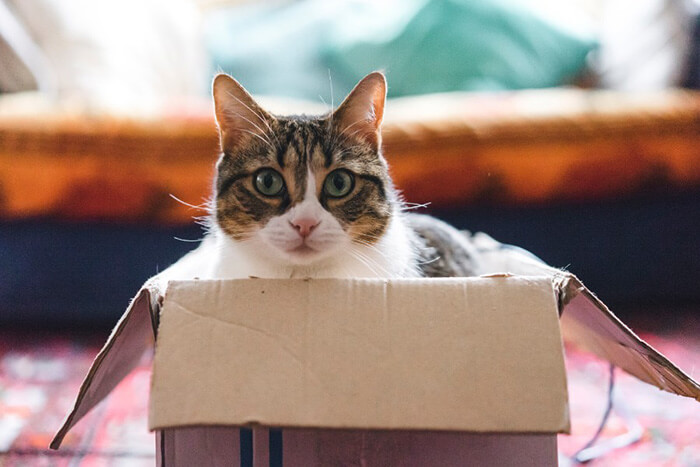

Is your cat fat? If so, he’s not alone. According to The Association for Pet Obesity Prevention, 60% of American felines are overweight or obese. It can be easy to think a few extra pounds on your kitty just adds to his cuteness factor. It can’t be that big of a deal, right? Sadly, that’s far from true. Feline obesity puts overweight cats at a much-higher risk for a variety of diseases, including diabetes and heart disease.
Enabling Obesity
Both veterinary science and common sense says that the rise in feline obesity is linked to the same patterns that have led to the rise in human obesity. Like us, many of our cats are living a more sedentary lifestyle than they have in the past. Indoor-only cats (in particular) that are not given adequate opportunities for physical exercise can easily pack on the pounds, especially if they’re packing in the calories from pet treats, human foods, and overfeeding, too.
In short, humans enable cats to become overweight – and it’s up to us to bring our feline friends back to a healthy weight and lifestyle.
Taking Control of Your Cat’s Weight
If your cat is already overweight, or if the scales are starting to tip that direction, it’s time to schedule an appointment with your family veterinarian for a feline wellness exam. Even if your cat seems healthy enough (aside from his size), it’s important to check in with your veterinarian on your cat’s internal health and to test for any latent health issues that may be developing as a result of their obesity.
During your cat’s appointment, be sure to ask about the ideal food and portion size for your cat’s specific weight loss goals. Like people, there is not a one-size-fits-all approach to cat nutrition and weight loss. There are, however, a few common sense steps you can take – both immediately and long term – to help curtail the issue:
- Stop Free Choice Feeding. As much as your cat may protest, it’s OK to let their food bowl go empty. Limit the amount of food your cat is consuming by controlling portion size and daily feeding times. Be consistent and hold firm to 2-3 small meals a day.
- Not all cat foods are created equal. Seek out quality cat foods that aren’t packed full of fillers and by-products. This proactive expense will reduce the chances for larger health issues and will more than make up for the extra out-of-pocket expense in the long-term.
- Be wary of labels. Many pet food manufacturers inflate recommended portion sizes in an attempt to inflate their sales. If you’re unsure how much your cat should be eating (regardless of his size), please give your family veterinarian a call.
- Reduce or eliminate dry cat food. Unless otherwise directed by your vet, try to reduce the amount of dry food you’re feeding your cat, as it is (essentially) junk food and offers little to your pet’s overall nutrition.
- Restrict or eliminate cat treats. Again with the junk food. If you must give your kitty store-bought treats, look for treats that are grain-free, high in protein, and meat-based.
- Get a move on! Physical activity, be it indoors or out, is key to controlling your pet’s weight. Opportunities to climb, chase, frisk, and frolic are all part of your cat’s healthy lifestyle.
Altered Cats and Feline Obesity
Statistics tend to show that cats who have been spayed or neutered tend to be at “higher risk” for obesity than their un-altered counterparts. While there does tend to be a correlation between altered cats and obesity, the cause is more a result in changes in your cat’s lifestyle after the surgery, than from having the procedure done, in and of itself.
Cats that have been fixed, and males in particular, tend to live more idle lives than their intact counterparts, as they aren’t constantly on the prowl. This, coupled with the natural aging process and reduced metabolism of adulthood, can leave your cat vulnerable to weight gain, especially if portions and activity levels are not controlled.
Please do not not fix your cat just because you are afraid of pet obesity. The benefits far outweigh the risk, especially if you remain mindful of monitoring your cat’s nutrition and play.
Food is Not Love
We all know that life can get busy and that can often result in us not spending as much time playing with and loving on our feline companions as we (and they) would like.
As tempting as it can be, don’t try to “make it up to them” by indulging their appetites for treats or overfeed them to assuage your guilt. If you want to spoil your kitty, break out the laser pointer instead of the cheese, or curl up with them for a good Petflix and Chill session. You’ll both be happier, and they will be healthier, for it.
If you have any questions about the effects of spaying or neutering on your cat’s weight or overall health, please don’t hesitate to call us. And if you feel your pet is in need of pet nutritional counseling, please call your family veterinarian.
